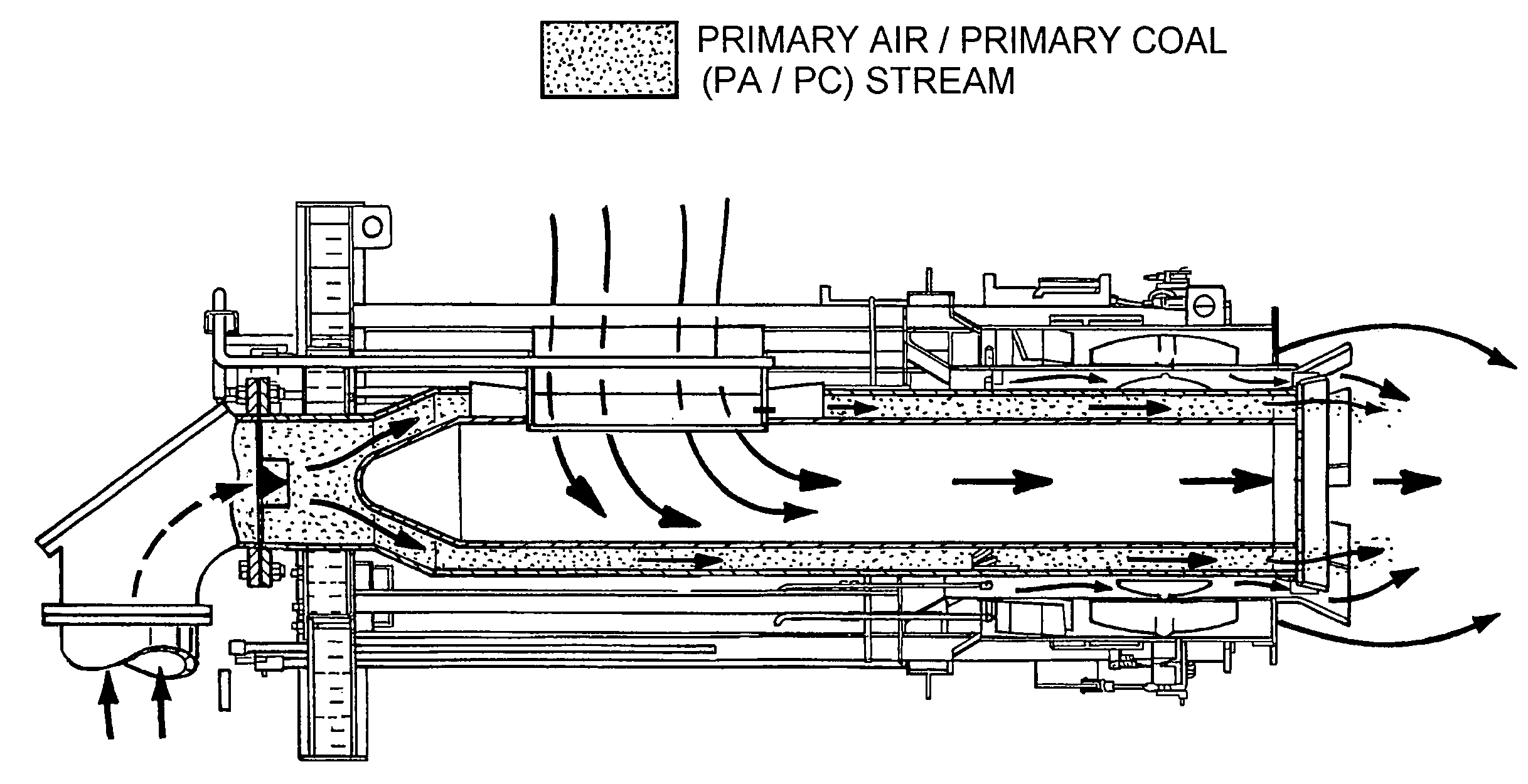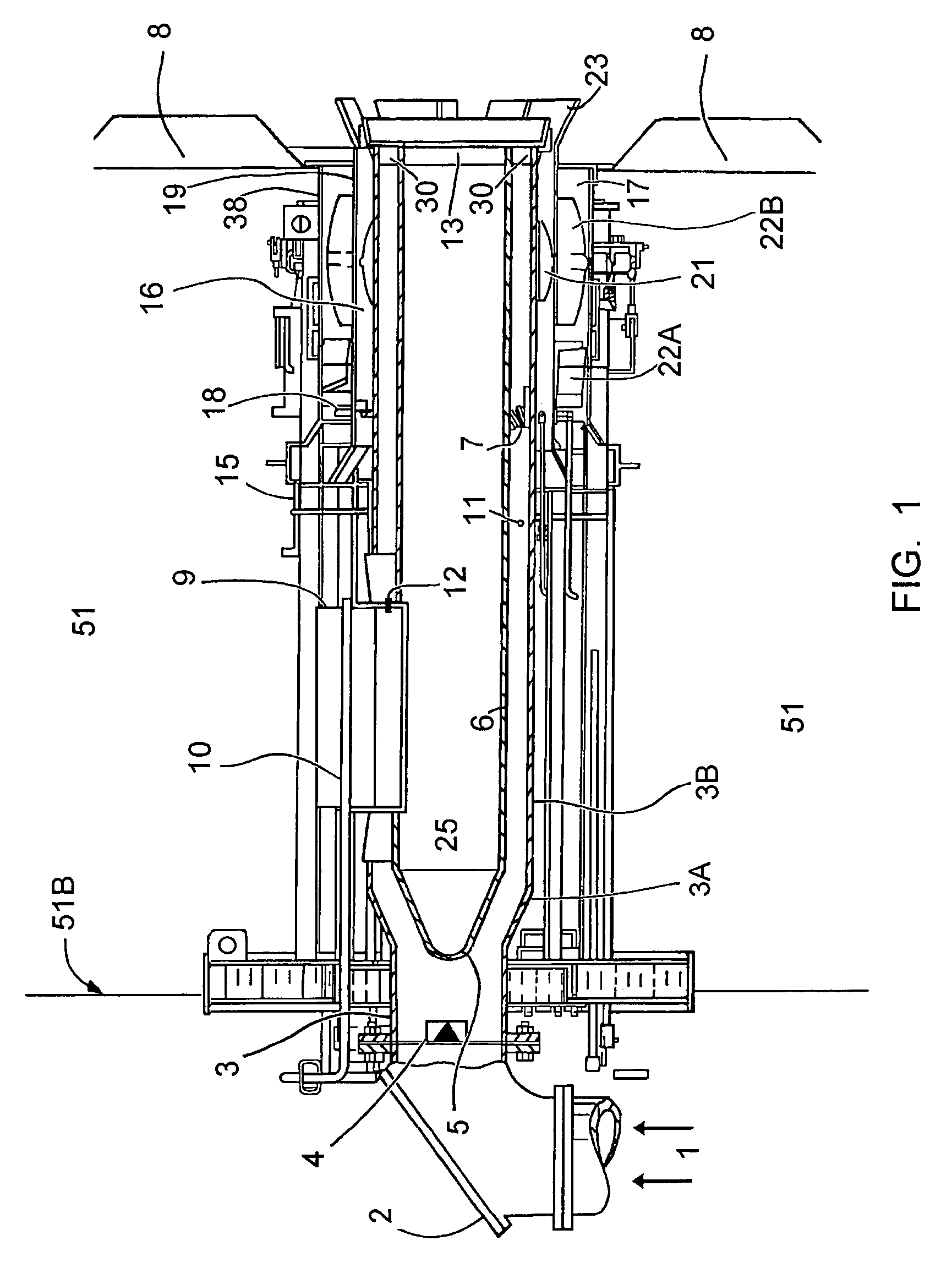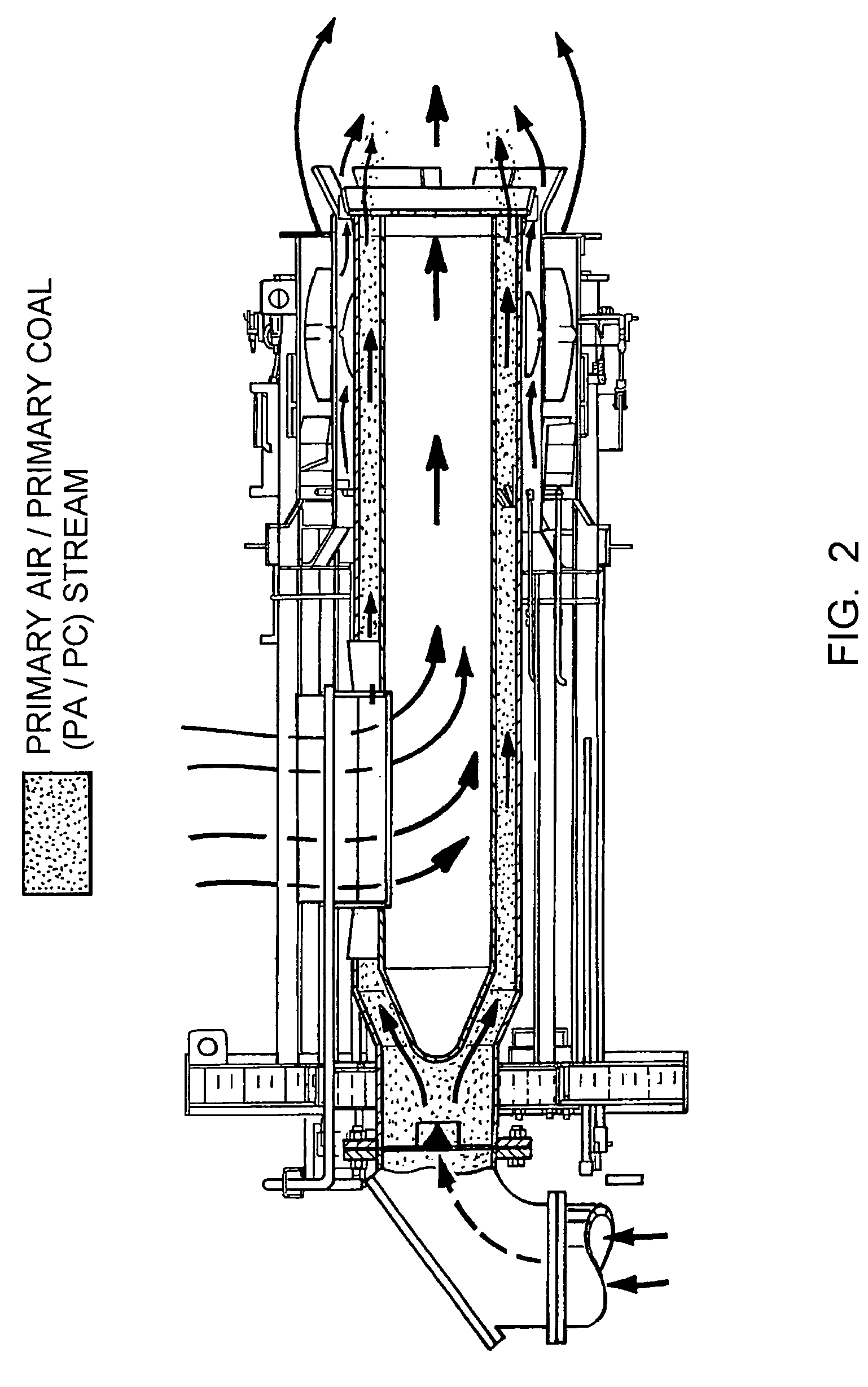Burner with center air jet
a fuel burner and air jet technology, applied in the field of fuel burners, can solve the problems of forming long flames, affecting boiler operation, and consuming a lot of fuel, and achieve the effect of reducing nox emissions
- Summary
- Abstract
- Description
- Claims
- Application Information
AI Technical Summary
Benefits of technology
Problems solved by technology
Method used
Image
Examples
Embodiment Construction
[0020]Referring to the drawings, generally where like numerals designate the same or functionally similar features, throughout the several views and first to FIG. 1, there is shown a schematic sectional view of a burner depicted in accordance with the present invention. Axial pipe 6, defining an axial zone 25 therein, is concentrically surrounded by a first annular pipe 3 wherein the area between the two pipes defines a first annular zone 11. Radially interposed between a portion of first annular pipe 3 and axial pipe 6 is feeder duct 9 such that axial pipe 6 and windbox 51 are in fluid communication with opposite ends of feeder duct 9.
[0021]Referring now to FIG. 3, a top view of feeder duct 9 radially interposed between at least a portion of first annular pipe 3 and axial pipe 6 (not shown in FIG. 3) is provided, such that axial pipe 6 and windbox 51 are in fluid communication with opposite ends of feeder duct 9.
[0022]Referring back to FIG. 1, secondary air is supplied by forced dr...
PUM
 Login to View More
Login to View More Abstract
Description
Claims
Application Information
 Login to View More
Login to View More - R&D
- Intellectual Property
- Life Sciences
- Materials
- Tech Scout
- Unparalleled Data Quality
- Higher Quality Content
- 60% Fewer Hallucinations
Browse by: Latest US Patents, China's latest patents, Technical Efficacy Thesaurus, Application Domain, Technology Topic, Popular Technical Reports.
© 2025 PatSnap. All rights reserved.Legal|Privacy policy|Modern Slavery Act Transparency Statement|Sitemap|About US| Contact US: help@patsnap.com



